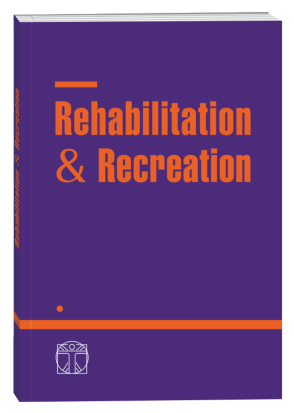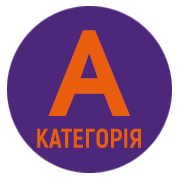STRUCTURAL MODEL OF THE PHYSICAL CONDITION OF PRIMARY SCHOOL PUPILS OF DIFFERENT MEDICAL GROUPS
DOI:
https://doi.org/10.32782/2522-1795.2024.18.3.18Keywords:
analysis, factor analysis, physical condition, physical development, physical fitnessAbstract
Purpose. The purpose of the article is to determine the structure of the model of the physical condition of primary school pupils depending on the medical groups. Material. The study involved 180 children aged 7 to 10 years, assigned to different medical groups by health status, studying in schools in Kyiv. Factor analysis was used as a modeling method. The study used research methods such as theoretical research methods (analysis of literature, study of medical records), pedagogical research methods (assessment of indicators and indices of physical development and functional status of major body systems using common in the practice of physical education and age physiology indicators and indices, testing of physical fitness using a battery of tests and indices of physical fitness, and statistical analysis. Factorial analysis was used as method of modeling. Results. In the structure of the physical condition of primary school pupils there are 7 factors that explain 64.8% of the total variance. It is proved that anthropometric and functional indicators in combination with indicators of such motor tests as wrist dynamometry, flexion of torso extension from a supine position for 60 s and shuttle run 4 × 9 m, are concentrated in the most influential factors I and II. In primary school pupils assigned to a special medical group, the following dominant factors of the physical condition model were determined: physical development, hand dynamometry of the right and left hand, indicators of the cardiovascular system, respiratory system. For primary school pupils of basic and preparatory medical groups, the dominant factors in the model of physical condition are physical development, physical fitness, strength, and physical health. Conclusions. The obtained data indicate that as a result of the analysis of factor models of the physical condition of children of primary school age, children of different medical groups received information necessary for making decisions on monitoring physical education, as well as for the development of effective programs of physical training of primary school children. Factor analysis made it possible to determine models of physical fitness and specify informative indicators for pedagogical control in each medical group.
References
Андрєєва О.В., Саїнчук О.М. Підходи до оцінки рівня здоров’я та адаптаційних можливостей школярів молодших класів. Педагогiка, психологiя та медико-бiологiчнi проблеми фiзичного виховання i спорту. 2014. № 2. С. 3–8. https://doi.org/10.6084/m9.figshare.923507.
Боднар І.Р. Теоретико-методичні основи інтегративного фізичного виховання школярів 1–3 груп здоров’я : автореф. дис. … д-ра. наук фіз. вих. : 24.00.02 «Фізична культура, фізичне виховання різних груп населення». Львів. нац. ун-т фіз. культ. Львів, 2014. 36 с. URL: https://repository.ldufk.edu.ua/bitstream/34606048/20979/1/bodnar_i_r.pdf.
Бондарчук Н.Я., Тимочко О.І., Степчук Н.В. Диференційоване використання фізичних вправ на заняттях фізичної культури зі студентами з різним рівнем фізичної підготовленості. Rehabilitation and Recreation. 2022. № 12. С. 121–127. https://doi.org/10.32782/2522-1795.2022.12.17.
Гончарова Н.М. Теоретико-методичні основи здоров’я формуючих технологій в процесі фізичного виховання дітей молодшого шкільного віку : автореф. дис. … д-ра наук фіз. вих. : 24.00.02 «Фізична культура, фізичне виховання різних груп населення». Нац. ун-т фіз. вих. і спорту України. Київ, 2019. 542 с. URL: https://uni-sport.edu.ua/sites/default/files/pictures/diss_goncharova_n.m.pdf.
Давиденко О., Семененко В., Трачук С. Основи програмування фізкультурно-оздоровчих занять з дитячим контингентом : навчальний посібник. Київ : АртЕк, 2019. 248 с. URL: http://reposit.uni-sport.edu.ua/handle/787878787/1867.
Дудко М., Хрипко І., Бишевець Н. Гендерний підхід у системі фізичного виховання. Фізична культура. Спорт і культура здоров’я в сучасному суспільстві. 2017. № 1(37). С. 12–17. https://doi.org/10.29038/2220-7481-2017-01-12-17.
Красов О.І. Факторний аналіз показників морфофункціонального стану та фізичної підготовленості дітей 9-річного віку. Scientific journal of National Pedagogical Dragomanov University. 2021 № 5K(134). Р. 81–84. URL: https://enpuir.npu.edu.ua/bitstream/handle/123456789/35774/Krasov.pdf?sequence=1.
Красова І., Красов О. Інформативна значущість показників фізичної підготовленості та морфофункціонального стану у структурі рухової системи учнів 9–10-річного віку. Слобожанський науково-спортивний вісник. 2019. № 1(69). С. 18–24. https://doi.org/10.15391/snsv.2019-1.003.
Рибалко Л.М. Методика розвитку фізичних якостей в учнів молодшого шкільного віку засобами рухливих ігор. Вісник Луганського національного університету імені Тараса Шевченка. Педагогічні науки. 2021. № 2(340). Р. 240–251. https://doi.org/10.12958/2227-2844-2021-2(340)-2-240-251.
Томенко О.А. Взаємозв’язок між показниками соматичного здоров’я, рухової активності, теоретичної підготовленості, оволодіння руховими діями та мотиваційно-ціннісної сфери школярів. Педагогіка, психологія та медико-біологічні проблеми фізичного виховання і спорту. 2011. № 3. С. 148–150. URL: https://sportpedagogy.org.ua/html/journal/2011-03/11totaos.pdf.
Чекстере О.Ю. Фізіологічний розвиток старших дошкільників як один з показників готовності дітей до навчання. Традиційні та інноваційні підходи до наукових досліджень. 2020. № 2. С. 79–82. https://doi.org/10.36074/10.04.2020.v2.16.
Kashuba V., Stepanenko O., Byshevets N., Kharchuk O., Savliuk S., Bukhovets B., Grygus I., Napierała M., Skaliy T., Hagner-Derengowska M., Zukow W. Formation of Human Movement and Sports Skills in Processing Sports-pedagogical and Biomedical Data in Masters of Sports. International Journal of Human Movement and Sports Sciences. 2020. № 8(5). С. 249–257. https://doi.org/10.13189/saj.2020.080513.
Krutsevich T., Panhelova N., Trachuk S. Control of physical preparedness of schoolchildren using index method. Journal of Physical Education and Sport. 2019. № 19(3). С. 1591–1598. https://doi.org/10.7752/jpes.2019.02166.
Krutsevich T., Pangelova N., Trachuk S., Diedukh M. Features of the Reaction of the Cardiorespiratory System of Schoolchildren with Physical Loads on the Tradmile. International Journal of Applied Exercise Physiology. 2020. № 9(1). Р. 113–121. URL: http://www.ijaep.com/index.php/IJAE/article/view/635.
Krutsevich T., Pаngelova N. & Trachuk S. Model-target characteristics of physical fitness in the system of programming sports and recreational activities with adolescents. Journal of Physical Education and Sport. 2019. № 19 (1). Р. 242–248. https://doi.org/10.7752/jpes.2019.s1036.
Trachuk S., Semenenko V., Biletska V., Kudria M., Kuznetsova L., Kholodova O., Mykhalchuk A. Interrelation of the indicators of the physical preparedness level and functional condition of junior school children organism. Journal of physical education and sport. 2019. № 19(4). Р. 2405–2410. https://doi. org/10.7752/jpes.2019.04364.
Downloads
Published
How to Cite
Issue
Section
License
Copyright (c) 2024 В. П. Семененко, А. Д. Михальчук, М. О. Дєдух

This work is licensed under a Creative Commons Attribution-NonCommercial-NoDerivatives 4.0 International License.












